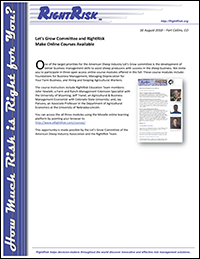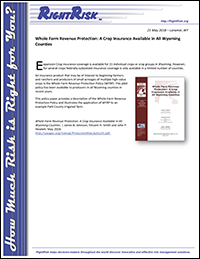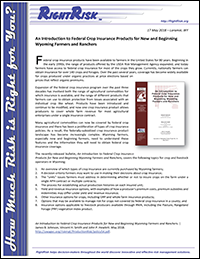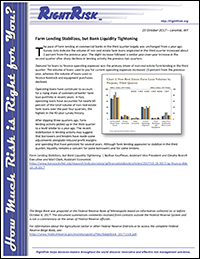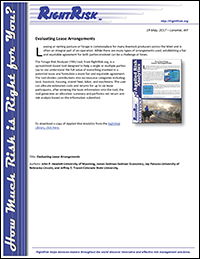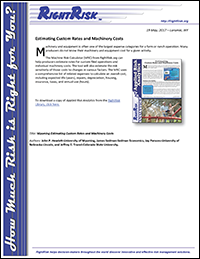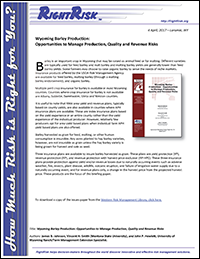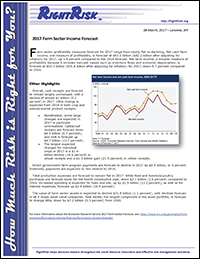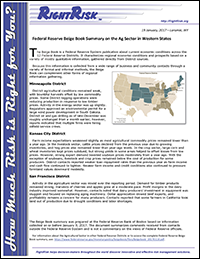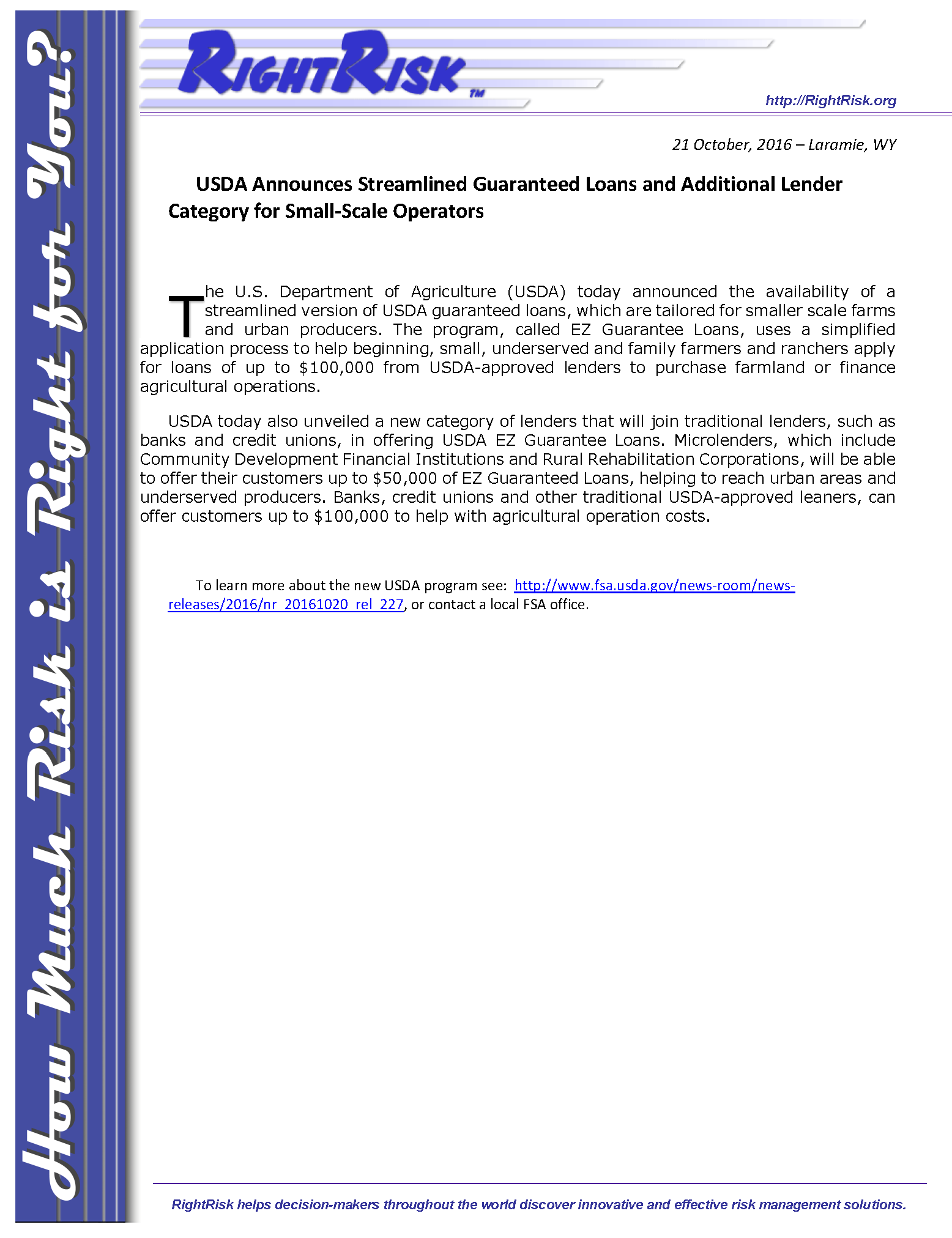Federal crop insurance products have been available to farmers in the United States for 80 years. Beginning in the early 1990s, the range of products offered by the USDA Risk Management Agency expanded, and today farmers have access to federal crop insurance for most of the crops they grow. Currently, nationally farmers can obtain insurance for over 140 crops and forages. Over the past several years, coverage has become widely available for crops produced under organic practices at price elections based on prices that reflect organic premiums.
Wyoming farmers, especially new and beginning farmers, need to understand these features and the information they will need to obtain federal crop insurance coverage.
“An Introduction to Federal Crop Insurance Products for New and Beginning Wyoming Farmers and Ranchers,” covers the following topics for crop and livestock operators in Wyoming:
1. An overview of which types of crop insurance are currently purchased by Wyoming farmers;
2. A decision criteria farmers may want to use in making their decisions about crop insurance;
3. The “units” issues farmers must address in determining whether or not to insure crops on the farm under a single APH contract or multiple contracts;
4. The process for establishing actual production histories on each insured unit;
5. Yield and revenue insurance options, with examples of how a producer’s premium costs, premium subsidies and indemnities may differ under yield and revenue insurance;
6. Other insurance options for crops, including GRP and whole farm insurance products;
7. Options that may be available to manage risk for crops not covered by federal crop insurance in a county; and
8. Insurance options applicable to livestock producers available through RMA, including the Pasture, Rangeland Forage (PRF) vegetation index product.
Click here to learn more…
